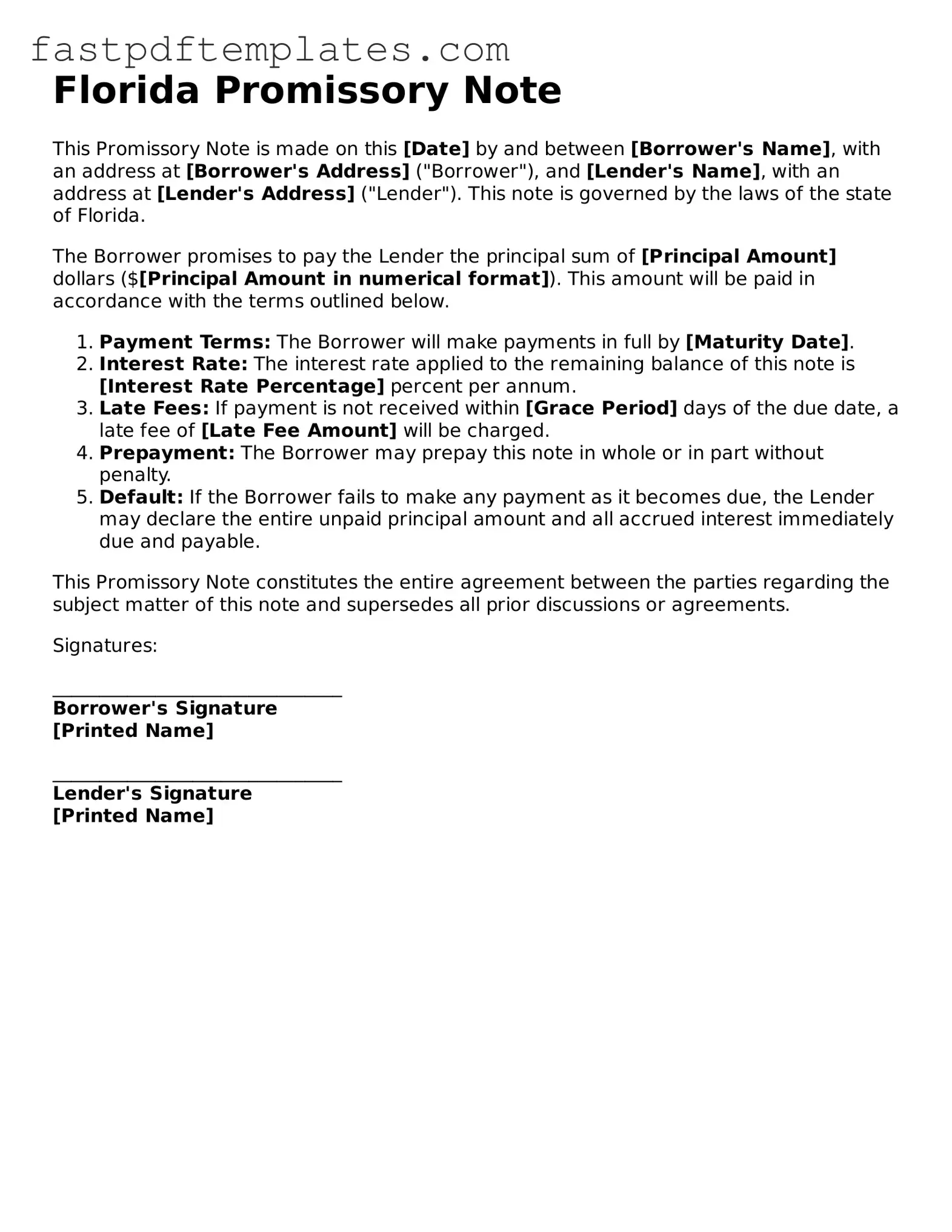Florida Promissory Note
This Promissory Note is made on this [Date] by and between [Borrower's Name], with an address at [Borrower's Address] ("Borrower"), and [Lender's Name], with an address at [Lender's Address] ("Lender"). This note is governed by the laws of the state of Florida.
The Borrower promises to pay the Lender the principal sum of [Principal Amount] dollars ($[Principal Amount in numerical format]). This amount will be paid in accordance with the terms outlined below.
- Payment Terms: The Borrower will make payments in full by [Maturity Date].
- Interest Rate: The interest rate applied to the remaining balance of this note is [Interest Rate Percentage] percent per annum.
- Late Fees: If payment is not received within [Grace Period] days of the due date, a late fee of [Late Fee Amount] will be charged.
- Prepayment: The Borrower may prepay this note in whole or in part without penalty.
- Default: If the Borrower fails to make any payment as it becomes due, the Lender may declare the entire unpaid principal amount and all accrued interest immediately due and payable.
This Promissory Note constitutes the entire agreement between the parties regarding the subject matter of this note and supersedes all prior discussions or agreements.
Signatures:
_______________________________
Borrower's Signature
[Printed Name]
_______________________________
Lender's Signature
[Printed Name]
